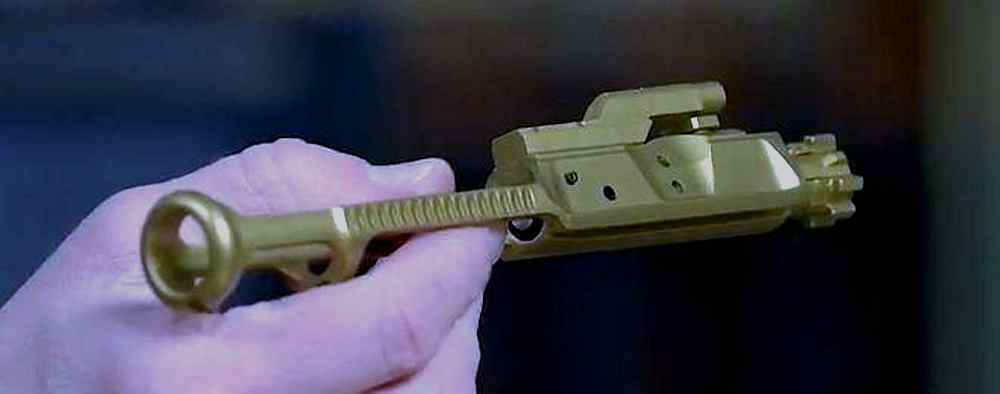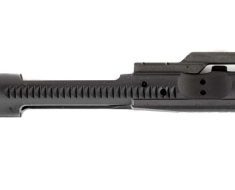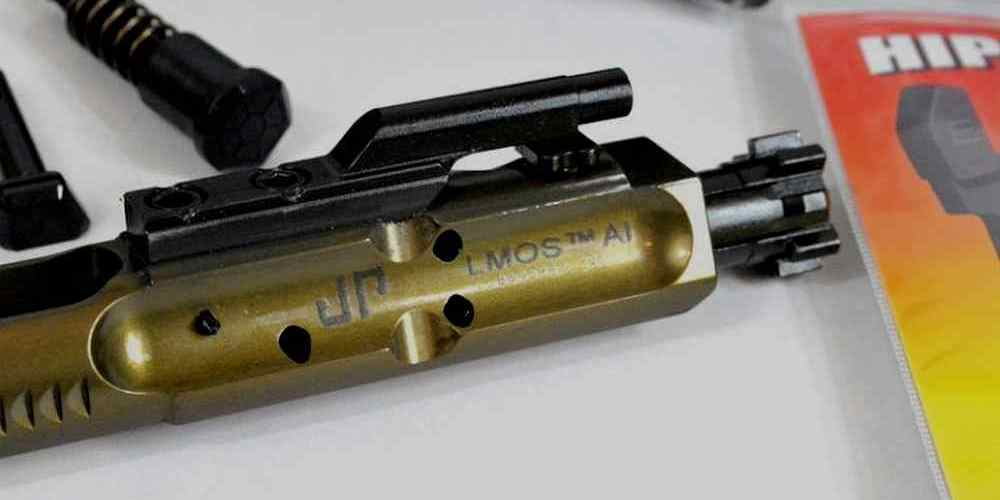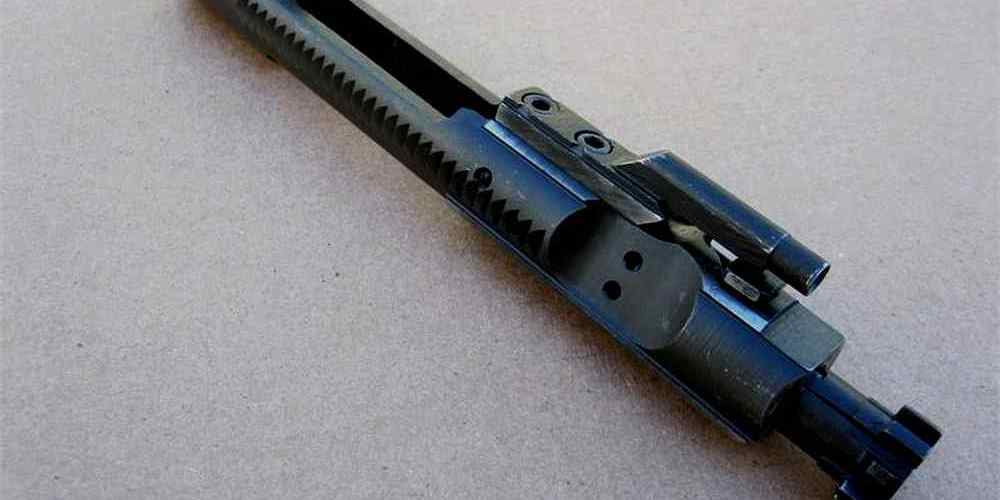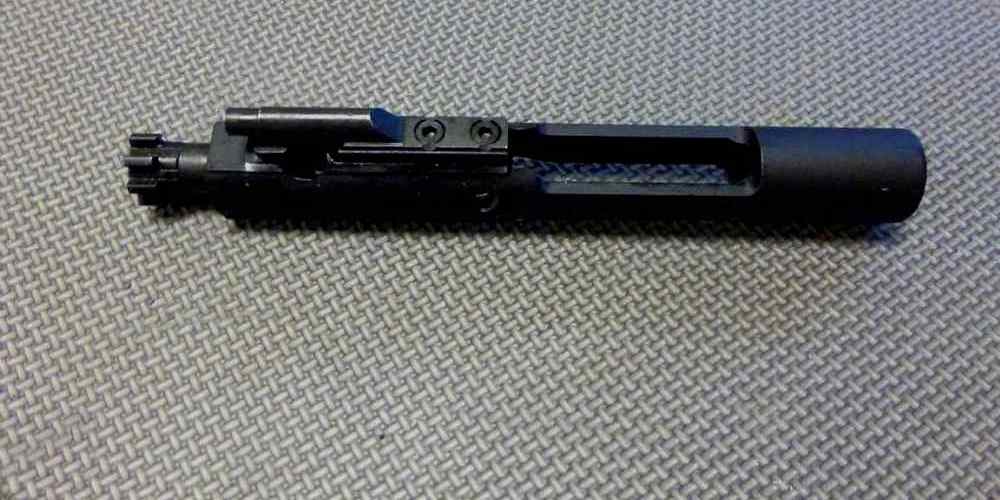“Maximize velocity, minimize recoil with BCG upgrades for your AR15.”
Benefits of Using BCGs for Improving AR15 Muzzle Velocity
When it comes to improving the performance of your AR15 rifle, one component that often gets overlooked is the bolt carrier group (BCG). The BCG plays a crucial role in the functioning of the rifle, as it is responsible for cycling the rounds and ensuring that the rifle fires smoothly and reliably. But did you know that the BCG can also have a significant impact on the muzzle velocity and recoil of your AR15?
One of the key benefits of using a high-quality BCG in your AR15 is the potential for increased muzzle velocity. The BCG is responsible for extracting and ejecting spent casings, as well as loading new rounds into the chamber. A well-designed BCG can help to ensure that the rifle cycles smoothly and efficiently, which can in turn lead to a more consistent and higher muzzle velocity.
By reducing friction and ensuring proper alignment of the bolt and carrier, a high-quality BCG can help to maximize the energy transfer from the gas system to the bolt, resulting in increased muzzle velocity. This can be particularly beneficial for shooters who are looking to achieve greater accuracy and longer effective range with their AR15.
In addition to improving muzzle velocity, a high-quality BCG can also help to reduce recoil. Recoil is the backward movement of the rifle that occurs when a round is fired, and it can have a significant impact on the shooter’s ability to maintain accuracy and control. By reducing the weight of the BCG and optimizing its design, manufacturers can help to minimize the amount of recoil that is transferred to the shooter.
A lighter BCG can help to reduce the overall weight of the rifle, making it easier to handle and more comfortable to shoot. Additionally, a well-designed BCG can help to absorb and dissipate some of the energy generated by the firing of the round, further reducing the amount of recoil that is felt by the shooter.
Overall, using a high-quality BCG in your AR15 can have a number of benefits, including increased muzzle velocity and reduced recoil. By investing in a well-designed BCG, you can help to improve the performance and handling of your rifle, making it more accurate and enjoyable to shoot.
In conclusion, the bolt carrier group plays a crucial role in the functioning of an AR15 rifle, and can have a significant impact on both muzzle velocity and recoil. By investing in a high-quality BCG, shooters can help to maximize the performance of their rifle and achieve greater accuracy and control. So next time you’re looking to upgrade your AR15, don’t forget to consider the benefits of a quality BCG.
How BCGs Affect Recoil Management in AR15 Rifles
The bolt carrier group (BCG) is a critical component of an AR15 rifle that plays a significant role in both muzzle velocity and recoil management. Understanding how different BCGs impact these factors can help shooters make informed decisions when customizing their rifles.
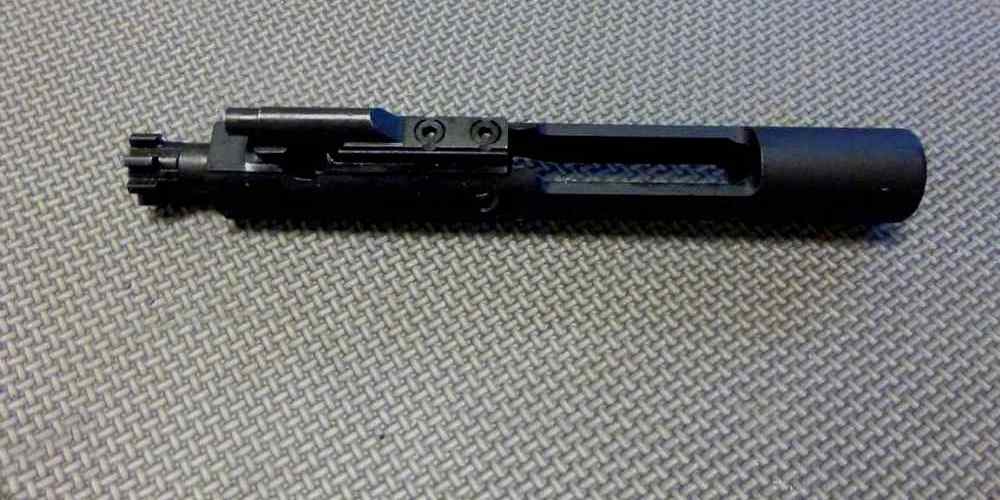
When it comes to muzzle velocity, the weight of the BCG can have a direct impact on how fast a bullet travels downrange. A heavier BCG can slow down the cycling of the rifle, which can result in lower muzzle velocities. On the other hand, a lighter BCG can allow for faster cycling, potentially increasing muzzle velocity. Shooters looking to maximize their rifle’s performance may opt for a lighter BCG to achieve higher velocities.
However, it’s essential to strike a balance between muzzle velocity and recoil management. A lighter BCG may increase muzzle velocity, but it can also lead to increased felt recoil. This can make it more challenging to stay on target and follow-up shots may be slower and less accurate. Conversely, a heavier BCG can help reduce felt recoil, making it easier to control the rifle and maintain accuracy.
In addition to weight, the design of the BCG can also impact recoil management. BCGs with enhanced features such as adjustable gas blocks, reduced mass carriers, and improved buffer systems can help mitigate recoil and improve overall shooting performance. These enhancements can help shooters achieve faster follow-up shots and better accuracy, especially in rapid-fire situations.
Another factor to consider when choosing a BCG is the material it is made from. BCGs are typically made from either steel or aluminum, with steel being the more common choice due to its durability and reliability. Steel BCGs are less prone to wear and tear, making them a popular option for shooters looking for a long-lasting and dependable component.
However, aluminum BCGs are gaining popularity due to their lightweight construction. While aluminum BCGs may not be as durable as their steel counterparts, they can help reduce overall rifle weight, which can be beneficial for shooters looking to build a lightweight and maneuverable rifle.
Ultimately, the impact of BCGs on AR15 muzzle velocity and recoil management is a complex interplay of factors that must be carefully considered when customizing a rifle. Shooters should take into account the weight, design, and material of the BCG to achieve the desired balance between muzzle velocity and recoil management.
In conclusion, BCGs play a crucial role in determining both muzzle velocity and recoil management in AR15 rifles. Shooters looking to optimize their rifle’s performance should carefully consider the weight, design, and material of the BCG to achieve the desired balance between speed and control. By understanding how different BCGs impact these factors, shooters can make informed decisions when customizing their rifles for maximum performance.
Comparing Different Types of BCGs for AR15s
When it comes to customizing your AR15, one of the key components to consider is the bolt carrier group (BCG). The BCG plays a crucial role in the overall performance of your rifle, affecting both muzzle velocity and recoil. In this article, we will explore the impact of different types of BCGs on these two important factors.
First and foremost, let’s discuss how the BCG affects muzzle velocity. The BCG is responsible for cycling the action of the rifle, which in turn determines how quickly the bullet is propelled out of the barrel. A high-quality BCG can help maximize muzzle velocity by ensuring smooth and consistent cycling of the action. On the other hand, a low-quality BCG may result in inconsistent cycling, leading to decreased muzzle velocity.
One of the key factors that can impact muzzle velocity is the weight of the BCG. A heavier BCG can help increase muzzle velocity by providing more inertia to cycle the action. However, a heavier BCG can also increase felt recoil, which may not be ideal for all shooters. On the other hand, a lighter BCG can reduce felt recoil but may also result in decreased muzzle velocity.
Another factor to consider when choosing a BCG is the material it is made from. BCGs are typically made from either steel or aluminum, with steel being the more durable option. Steel BCGs are known for their longevity and reliability, making them a popular choice among AR15 enthusiasts. However, steel BCGs are also heavier, which can impact both muzzle velocity and recoil.
Aluminum BCGs, on the other hand, are lighter and can help reduce felt recoil. However, aluminum is not as durable as steel and may wear out more quickly with extended use. When choosing between steel and aluminum BCGs, it is important to consider your priorities – whether you prioritize durability or reduced recoil.
In addition to weight and material, the design of the BCG can also impact muzzle velocity and recoil. Some BCGs feature enhanced designs, such as reduced mass carriers or adjustable gas keys, which can help optimize performance. These design features can help improve cycling and reduce felt recoil, ultimately enhancing the overall shooting experience.
Ultimately, the impact of BCGs on muzzle velocity and recoil will vary depending on the specific type of BCG you choose. It is important to consider your priorities and preferences when selecting a BCG for your AR15. Whether you prioritize maximum muzzle velocity, reduced recoil, or durability, there is a BCG out there that can meet your needs.
In conclusion, the BCG plays a crucial role in determining the performance of your AR15. By choosing the right type of BCG, you can optimize both muzzle velocity and recoil, ultimately enhancing your shooting experience. Whether you prefer a steel BCG for its durability or an aluminum BCG for its reduced weight, there are plenty of options available to suit your needs. So, take the time to research and choose the BCG that best fits your preferences and enjoy improved performance with your AR15.
The Science Behind BCGs and Their Impact on Muzzle Velocity
When it comes to AR15 rifles, one of the key components that can have a significant impact on both muzzle velocity and recoil is the Bolt Carrier Group (BCG). The BCG is responsible for cycling the rifle’s action, extracting and ejecting spent casings, and loading new rounds into the chamber. It plays a crucial role in the overall performance of the rifle, and different BCG designs can have varying effects on muzzle velocity and recoil.
One of the primary ways in which the BCG can affect muzzle velocity is through its weight. A heavier BCG will typically result in higher muzzle velocity, as the added mass helps to absorb more of the recoil energy generated by the firing of the round. This can lead to a more consistent and stable shooting experience, as the rifle will be less prone to muzzle rise and other forms of recoil-induced movement.
On the other hand, a lighter BCG can result in lower muzzle velocity, as there is less mass to absorb the recoil energy. While this can lead to a faster cycling rate and potentially improved follow-up shot accuracy, it can also result in increased felt recoil and muzzle rise. Finding the right balance between weight and performance is key when selecting a BCG for your AR15 rifle.
In addition to weight, the design and materials used in the construction of the BCG can also impact muzzle velocity and recoil. For example, BCGs made from high-quality materials such as steel or titanium are typically more durable and reliable than those made from cheaper materials. This can result in more consistent performance over time, leading to improved accuracy and reliability.
Furthermore, the design of the BCG can also play a role in its impact on muzzle velocity and recoil. BCGs with enhanced features such as improved gas key staking, enhanced bolt carrier finishes, and reduced friction coatings can all contribute to a smoother cycling action and reduced felt recoil. These features can help to improve overall shooting performance and make the rifle more comfortable to shoot.
Overall, the BCG is a critical component of the AR15 rifle that can have a significant impact on both muzzle velocity and recoil. By carefully selecting a BCG that is well-suited to your shooting style and preferences, you can optimize the performance of your rifle and enjoy a more enjoyable shooting experience.
In conclusion, the BCG is a key component of the AR15 rifle that can have a significant impact on both muzzle velocity and recoil. By considering factors such as weight, design, and materials, you can select a BCG that is well-suited to your shooting style and preferences. This can help to optimize the performance of your rifle and improve your overall shooting experience.
Tips for Choosing the Right BCG for Your AR15 Rifle
When it comes to choosing the right bolt carrier group (BCG) for your AR15 rifle, there are a few key factors to consider. One of the most important considerations is how the BCG will impact the muzzle velocity and recoil of your rifle. Understanding the relationship between the BCG and these two factors can help you make an informed decision when selecting a BCG for your AR15.
The BCG plays a crucial role in the operation of an AR15 rifle. It is responsible for cycling the rounds, extracting and ejecting spent casings, and loading new rounds into the chamber. The design and construction of the BCG can have a significant impact on the performance of the rifle, including its muzzle velocity and recoil.
One of the key factors that can affect muzzle velocity is the weight of the BCG. A heavier BCG can help to increase muzzle velocity by providing more mass to help push the bolt forward with greater force. This can result in faster bullet speeds and improved accuracy at longer ranges. However, a heavier BCG can also increase felt recoil, making the rifle more difficult to control during rapid fire.
On the other hand, a lighter BCG can help to reduce felt recoil by decreasing the amount of mass moving back and forth with each shot. This can make the rifle easier to handle and more comfortable to shoot, especially for those who are sensitive to recoil. However, a lighter BCG may also result in lower muzzle velocity, which can impact the rifle’s performance at longer ranges.
Another factor that can impact muzzle velocity and recoil is the material used to construct the BCG. Most BCGs are made from either steel or aluminum, with steel being the more common choice due to its durability and strength. Steel BCGs are typically heavier than aluminum BCGs, which can help to increase muzzle velocity but may also increase felt recoil.
Aluminum BCGs, on the other hand, are lighter and can help to reduce felt recoil. However, aluminum is not as strong as steel and may not be as durable in the long run. It is important to consider the trade-offs between weight, strength, and durability when choosing a BCG for your AR15 rifle.
In addition to weight and material, the design of the BCG can also impact muzzle velocity and recoil. Some BCGs feature enhanced bolt designs, such as dual ejectors or enhanced extractors, which can help to improve the reliability and performance of the rifle. These features can also impact muzzle velocity and recoil, so it is important to consider how they will affect the overall performance of your rifle.
Ultimately, the best BCG for your AR15 rifle will depend on your individual preferences and shooting style. If you prioritize accuracy and long-range performance, a heavier steel BCG may be the best choice for you. If you are sensitive to recoil and prefer a lighter, more maneuverable rifle, an aluminum BCG may be a better option.
By considering the impact of BCGs on muzzle velocity and recoil, you can make an informed decision when choosing the right BCG for your AR15 rifle. Whether you prioritize speed, accuracy, or comfort, there is a BCG out there that can help you achieve your shooting goals.






